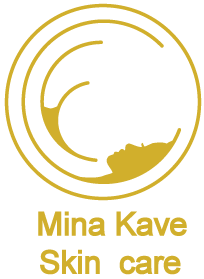Acne: Causes and Solutions
[vc_row][vc_column][vc_column_text]
Acne: Causes and Solutions
Of all the skin conditions that lead consumers to seek treatment, acne is, by far, the most common. A chronic, inflammatory disease of the pilosebaceous units (hair follicles and their sebaceous gland), acne affects between 40 and 50 million people in the U.S. alone.1
Today, countless products and therapies exist to treat acne, the largest sector of which is topical treatments – both prescription and over-the-counter. Yet, few products succeed at eliminating acne. This is because most exist to address acne symptoms rather than the multiple causes of the disease. Unless each of these factors is addressed, acne symptoms will reoccur.
The Four Main Causes of Acne
For those who suffer from acne, the skin’s natural rhythm of oil production and sloughing of dead skin cells is not in balance, as it is for those with healthy skin. Four principle factors have been identified:
- Follicular keratinization – Acne sufferers tend to have abnormally “sticky” skin cells. Because of this, dead skin cells do not slough or shed as they should and instead plug the hair follicle. This leads to a build-up of oil.
- Excess sebum production – Many acne sufferers have overactive sebaceous glands. This causes the production of greater quantities of sebum than is common.
- Colonization of Propionibacterium acnes (P. acnes) – The skin environment of some individuals tends to be more hospitable to P. acnes, the bacteria that cause acne lesions.
- Inflammation – Each of the three scenarios above may cause inflammation. When inflammation occurs, the acne condition worsens and may lead to scarring.
While these factors can individually contribute to the development of acne, most often they work together. The most common scenario is this: The overactive production of oil and presence of abnormally “sticky” cells cause the hair follicle to plug, thus promoting the growth of P. acnes. The obstructed follicle, engorged with sebum and dead skin cells, becomes visible at the surface of the skin in the form of a white papule (whitehead). If the follicle continues to dilate, the plug becomes further exposed and, due to the oxidation of its contents, the papule appears a dark color (blackhead). At this point, the follicle becomes the ideal environment for bacteria. As the bacteria release proteins (enzymes), inflammation occurs as characterized by a reddened appearance at the skin’s surface. The sebum is then converted to free fatty acids that attract white blood cells to the area and further the inflammation. This is when pustules begin to form.
Effective Ingredients in Acne Treatment
What follows are some of the over-the-counter substances that are beneficial in the fight against acne. While none of them address all four causes of acne alone, ingredients such as these may be combined in a single formulation or within product families to offer a complete solution to control symptoms and help regulate the factors that cause the disease.
Ingredients To Address Follicular Keratinization
- Retinyl Propionate – Retinoids, a form of vitamin A, have long been used successfully in acne treatments. In fact, tretinoin, an acid form of vitamin A, is one of the most prescribed acne remedies today. In over-the-counter skin care products, retinol, the alcohol form of vitamin A, is often used.
- Glycolic Acid – Glycolic acid is the smallest, molecularly, of all the alpha hydroxy acids and can, therefore, penetrate between cells to loosen dead skin, remove build-up inside the hair follicle, and open clogged pores, comedones and other impactions in oily areas. Continued use helps keep dead skin cells from accumulating on the follicle wall, thus preventing inflammatory acne lesions.
- Salicylic Acid – Salicylic acid, a beta hydroxy acid, works as a keratolytic agent. By opening clogged pores, salicylic acid helps to reestablish the normal skin cell replacement cycle. It is further beneficial due to its antimicrobial and antiseptic properties.
Ingredients To Address Excess Sebum Production
- Zinc Pyrithione – An antibacterial and antifungal agent, zinc pyrithione works to stop the growth of certain bacterium on the skin, including P. acnes. It also helps to regulate sebum secretion.
- Sulfur – One of only a handful of over-the-counter acne treatments to secure FDA approval, sulfur is among the oldest medicines in use. In the treatment of acne, it reduces oil gland activity and dissolves the skin’s surface layer of dry, dead cells. Additionally, it inhibits the growth of P. acnes.
- Niacinamide – Also known as vitamin B3, niacinamide decreases triglyceride production in the sebaceous glands. Studies have backed its ability to reduce sebum excretion rates and casual sebum levels.2 Additionally, niacinamide is a potent anti-inflammatory.
Ingredients To Address Colonization Of P. Acnes
- Benzoyl Peroxide – A potent antiseptic and oxidating agent, benzoyl peroxide is one of the most commonly used ingredients in the treatment of acne. It is effective at eliminating P. acnes and reduces the quantity of comedones. Benzoyl peroxide does not promote antibacterial resistance, as can happen with the use of prescription antibiotics.
- Eucalyptus Oil – The most versatile essential oil in nature, eucalyptus oil has been used for sinus relief, sore throats, as a topical antiseptic for skin injuries and as an inhalant for asthma and other respiratory conditions. It is proven effective in the treatment of acne due to its antiseptic properties, which inhibit the growth of P. acnes.3
- Tea Tree Oil – Extracted from the leaves of the Australian Melaleuca Alternafolia tree, topical application of tea tree oil helps to reduce bacteria on the skin, lessens inflammation and generally improves the symptoms of acne. In a study comparing tea tree oil to the use of benzoyl peroxide, improvements were achieved among patients in both groups, while those using tea tree oil reported fewer side effects.4
[/vc_column_text][/vc_column][/vc_row]
